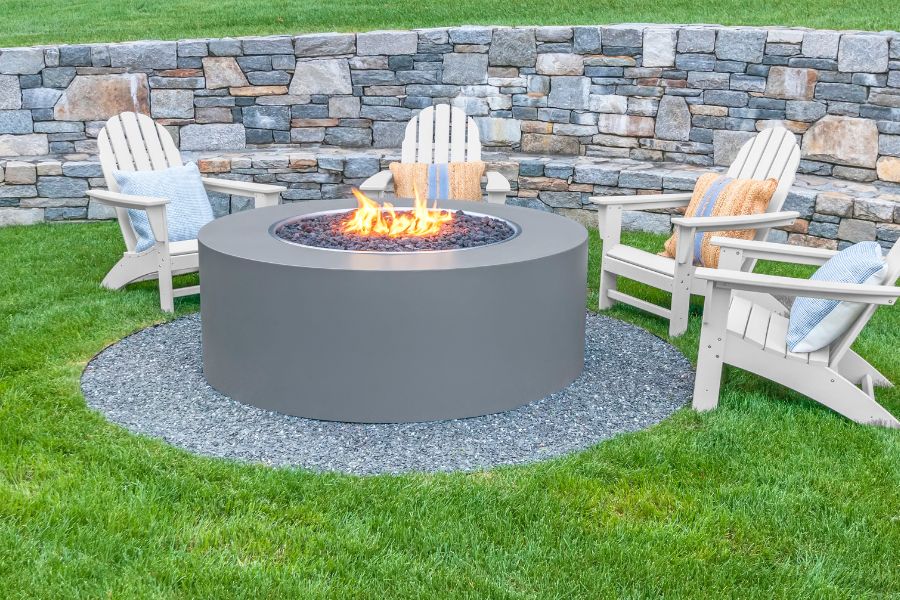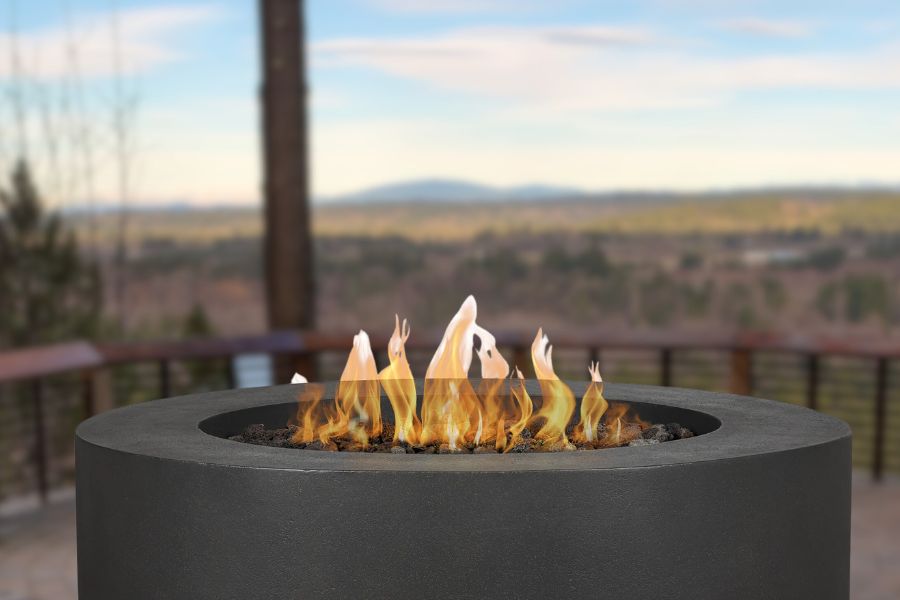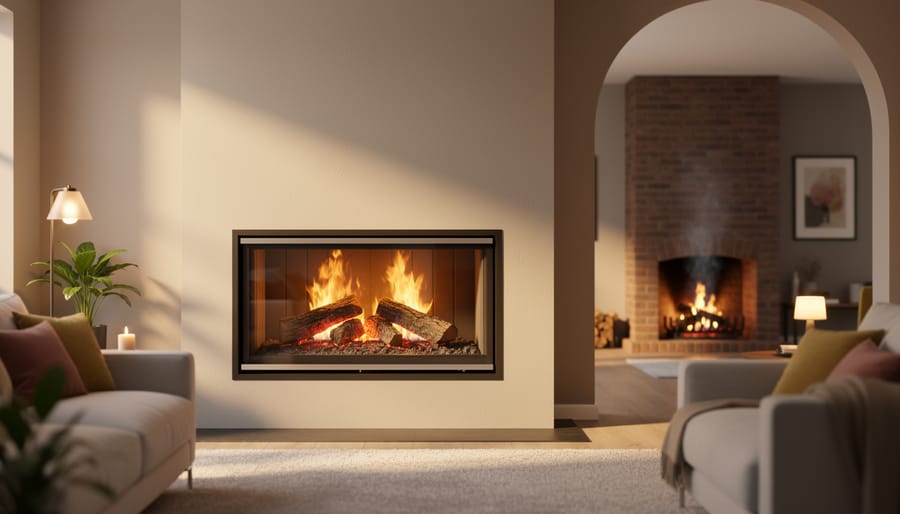Adding a fire pit to your outdoor space brings warmth, ambiance, and a cozy atmosphere for gatherings. However, the challenge of hiding an unsightly propane tank can detract from the overall visual appeal.
This article will explore various methods and creative solutions to effectively conceal propane tanks, ensuring both aesthetic beauty and safety for your fire pit.
Why Hide a Propane Tank for a Fire Pit?

There are several reasons why hiding a propane tank for your fire pit is beneficial.
Firstly, it enhances the overall aesthetic appeal of your outdoor space by eliminating the visual distraction of a bulky tank. Additionally, hiding the tank adds a sense of cohesiveness and elegance to the fire pit design, creating a more visually pleasing environment.
Lastly, hiding the tank helps protect it from external elements, ensuring its longevity and performance.
Factors to Consider When Hiding a Propane Tank
Before diving into the various methods, it’s important to consider a few factors when hiding a propane tank for your fire pit.
Firstly, think about the visual appeal and how well the tank will blend with the overall design of your outdoor space. You want it to seamlessly integrate without appearing out of place.
Secondly, accessibility is key. Ensure that the tank remains easily accessible for refilling and maintenance purposes.
Lastly, prioritize safety by ensuring proper ventilation and adhering to installation guidelines.
Methods for Hiding a Propane Tank
Concealing the Propane Tank Inside the Fire Pit

One effective method to hide a propane tank is to incorporate it inside the fire pit itself. Propane concrete fire pits are designed with a hidden tank compartment that allows for seamless integration.
These fire pits provide warmth and ambiance and offer an elegant and sophisticated solution to hiding the tank.
With a variety of designs and styles available, you can find one that suits your outdoor aesthetic.
Building a Separate Tank Hideaway

Another popular option is building a separate hideaway designed to house the propane tank.
This can be accomplished by constructing a dedicated enclosure or cabinet that matches the overall aesthetic of your patio or backyard.
The tank hideaway should provide easy access for refilling while effectively concealing the tank from view.
Incorporating the Propane Tank into Outdoor Furniture

An innovative and functional approach to hiding the tank is to incorporate it into outdoor furniture.
Consider building a fire pit DIY end table that doubles as stylish furniture and a source of warmth and ambiance.
This creative solution adds both functionality and aesthetic appeal to your outdoor space, making the propane tank seamlessly blend with the furniture design.
Utilizing Decorative Screens, Planters, or Custom Enclosures

Decorative screens, planters, or custom enclosures are excellent options for camouflaging the propane tank.
Strategically placing these elements around the fire pit creates an attractive barrier that effectively conceals the tank.
You can choose from a wide variety of designs, materials, and colors to match your outdoor aesthetic while maintaining a visually pleasing environment.
Safety Considerations When Hiding a Propane Tank
While focusing on hiding the propane tank, it’s crucial to prioritize safety. Ensure proper ventilation around the tank and the fire pit area to prevent the accumulation of propane gas.
Additionally, make sure the tank remains easily accessible for maintenance and refilling.
Follow the manufacturer’s guidelines for safe tank installation and use to minimize potential risks.
Comparing Propane, Natural Gas, and Wood Burning Fire Pits
Before deciding on a fire pit, it’s important to understand the key differences between propane, natural gas, and wood-burning options.
Most propane fire pits offer convenience and portability, as they can be easily moved and do not require a permanent gas hose.
Natural gas fire pits are popular for those with a fixed gas hose connection, providing a continuous fuel source.
Wood-burning fire pits offer a traditional and rustic feel, but require a steady supply of firewood.
Consider your specific needs and preferences when choosing the right type of fire pit.
Construction and Design Ideas for Hidden Propane Tank Fire Pits

Concrete Fire Pit with Propane Tank Inside
A gas fire pit with a hidden propane tank offers a sleek and modern design while effectively concealing the tank. These fire pits are often custom-built and can be integrated seamlessly into your outdoor space.
With a wide range of concrete fire pit sizes, shapes, and finishes available, you can choose one that complements your patio’s fire pit or backyard design.
Rectangular Fire Pit with Hidden Propane Tank
If you prefer a clean and contemporary look, a rectangular fire pit with a concealed propane tank is an excellent choice. The tank can be discreetly placed within the structure of the fire pit, allowing for a seamless appearance.
This design option is ideal for those who value simplicity and minimalism in their outdoor aesthetic.
Tabletop Fire Pit with Concealed Tank
For smaller outdoor areas or balconies, a tabletop fire pit with a hidden propane tank offers a compact, space-saving solution. Most fire pits are typically designed to resemble a tabletop or coffee table, with the propane tank cleverly concealed beneath.
Not only do they provide warmth and ambiance, but they also serve as functional pieces of furniture.
Extending the Lifespan of a Propane Tank
Understanding the average lifespan of a propane tank and taking steps to extend its longevity is crucial. Propane tanks typically have a lifespan of 12 to 15 years, depending on various factors such as usage and maintenance. To prolong the lifespan of your tank, consider the following tips:
- Regular Inspection and Maintenance: Inspect the tank regularly for any signs of damage or corrosion. Schedule professional maintenance checks to ensure the tank functions properly and promptly address any potential issues.
- Proper Storage: Store your propane tank in a well-ventilated, dry area away from direct sunlight and extreme temperatures. Keep it in an upright position to prevent leaks and damage.
- Safe Handling and Transportation: Following the necessary safety precautions when handling or transporting the propane tank. Secure the tank properly to prevent any accidents or damage.
- Refilling and Usage: Adhere to proper refilling procedures and guidelines provided by your propane supplier. Avoid overfilling the tank and use propane appliances and fire pits according to the manufacturer’s instructions.
Safety Guidelines for Propane Fire Pits
Using a propane fire pit requires careful attention to safety to prevent accidents and ensure a secure outdoor environment. Consider the following safety guidelines:
- Adequate Ventilation: Ensure proper ventilation around the fire pit area to prevent the accumulation of propane gas. This can be achieved by keeping the fire pit in an open space or having proper ventilation systems in place.
- Keep Flammable Materials Away: Maintain a safe distance between the fire pit and any flammable materials such as plants, furniture, or structures. Clear the surrounding area to reduce the risk of fire hazards.
- Monitor and Control Flames: Keep a close eye on the flames and never leave the fire pit unattended. Always have a fire extinguisher or a water source nearby in case of emergencies.
- Follow Local Codes and Regulations: Familiarize yourself with local regulations and codes regarding installing and using propane concrete fire pits. Adhere to these guidelines to ensure compliance and safety.
You can also check out 20 empty fireplace ideas guide.
Enhancing Aesthetics by Hiding the Gas Line to the Fire Pit

Enhancing the aesthetics of your fire pit goes beyond just concealing the propane tank. Another important aspect is hiding the gas line connecting the fire pit to the fuel source.
You can create a clean and seamless look for your outdoor space by effectively hiding the gas line. Here are some ideas to enhance aesthetics by hiding the gas line to the fire pit:
Underground Installation
Consider burying the propane hose underground. This requires professional installation and adherence to local regulations, but it provides a completely hidden gas line that doesn’t disrupt the visual appeal of your outdoor area.
Concealment with Pavers or Tiles
If burying the gas line is not an option, you can use pavers or tiles to create a pathway or design element that effectively conceals the gas line.
The propane hose can be run beneath the surface, and the pavers or tiles can be placed strategically to create a visually pleasing pattern.
Camouflage with Landscaping
Utilize landscaping elements such as plants, shrubs, or decorative rocks to camouflage the gas line. By strategically placing these elements around the gas line, you can seamlessly blend them into the natural surroundings of your yard or outdoor space.
Concealing with Decorative Covers
There are various decorative covers available specifically designed to hide gas lines. These covers can be made of materials such as metal, stone, or resin and come in different styles to match your outdoor aesthetic.
Simply place the cover over the gas line to create a neat, concealed look.
Built-in Features
Some fire pit models come with built-in features that incorporate the gas line within the design itself.
These fire pits may have hidden compartments or channels that discreetly conceal the gas line, allowing for a seamless and streamlined appearance.
Conclusion
Hiding a propane tank for your fire pit enhances the visual appeal of your outdoor space while ensuring safety.
Creative solutions like concealing the tank inside the fire pit or using separate hideaways and decorative enclosures offer style and functionality.
Understanding the differences between propane, natural gas, and wood-burning fire pits helps you choose the right option. Prioritize safety by following installation guidelines, local codes, and maintenance practices.
Enjoy the cozy warmth of your fire pit in a visually pleasing and secure outdoor environment.






